As we approach 2025, artificial intelligence continues to weave itself into the fabric of our daily lives more seamlessly than ever before. The latest wave of AI-powered gadgets is not only smarter but also more intuitive, helping us enhance productivity, safety, health, and entertainment. These innovations are set to transform how we interact with technology, making everyday tasks simpler, faster, and more enjoyable.

From wearable AI personal assistant glasses to intelligent home hubs with emotional intelligence, the upcoming generation of gadgets promises to bring unprecedented levels of convenience and personalization. Health-focused AI wearables will help detect illnesses early, while AI-driven cooking appliances will elevate culinary experiences. Autonomous delivery drones, language translators, and educational toys empowered by AI are paving the way for an interconnected and efficient future.
In this article, we explore some of the most exciting AI gadgets poised to revolutionize everyday life in 2025, highlighting their key features and the incredible benefits they offer. Whether it’s boosting your productivity, improving your wellbeing, or enhancing how you learn and communicate, these AI innovations are designed to make a meaningful impact on our daily routines.
AI Personal Assistant Glasses: The Future of Hands-Free Smart Devices

Imagine a world where you no longer need to glance down at your smartphone to check messages, get navigation directions, or translate foreign languages. AI personal assistant glasses are set to make this a reality by seamlessly integrating advanced technology directly into your field of vision. These lightweight, stylish devices employ augmented reality to overlay useful information in real time, allowing users to maintain situational awareness while staying connected. Whether you’re heading to a meeting or exploring a new city, these glasses will be your ultimate companion, offering instant access to notifications, calendar updates, and live transcription without interrupting your flow.
The true power of AI in these glasses lies in their ability to recognize faces and interpret environments dynamically. With facial recognition, they can display names and relevant context about people you meet, making networking effortless. Real-time language translation breaks down communication barriers instantly, offering subtitles in your preferred language right before your eyes. Navigational aids using augmented reality will guide you with visual cues superimposed on the path ahead, turning any unfamiliar terrain into an easy journey.
This hands-free approach to managing information and interactions provides unparalleled convenience and safety, especially in situations where using a phone is impractical or dangerous, such as while driving or cycling. By freeing your hands and minimizing distractions, AI personal assistant glasses promise a smarter, more intuitive way to stay connected and productive throughout the day.
Key Features and Functionalities
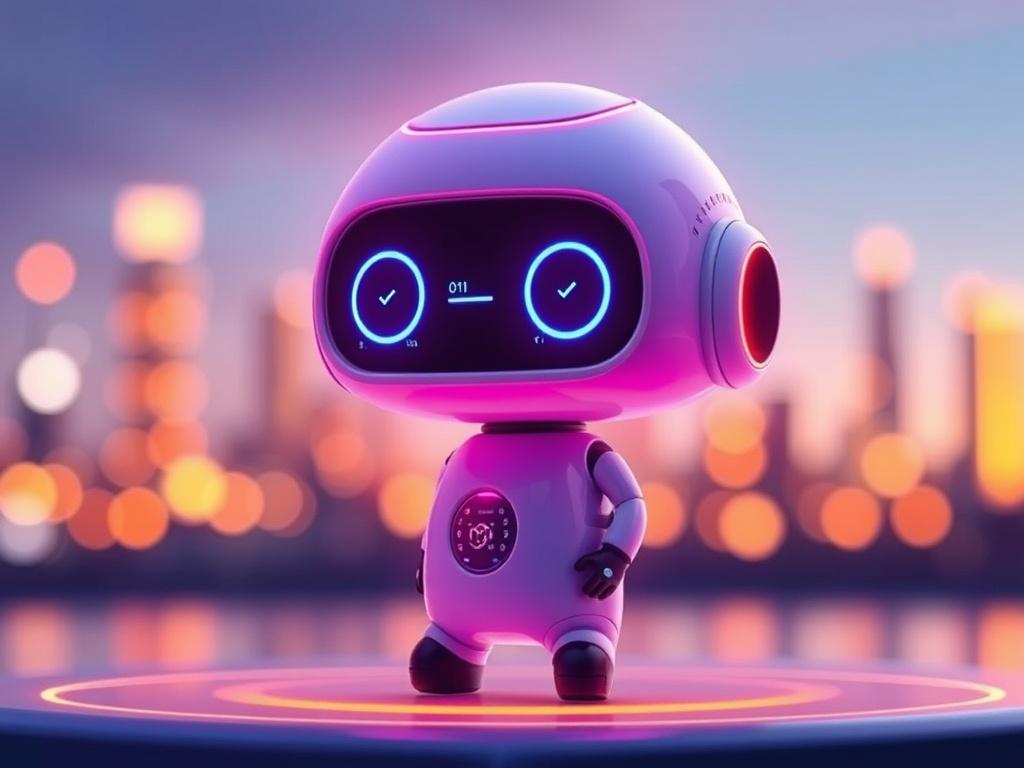
AI personal assistant glasses come loaded with a suite of advanced features designed to enhance everyday interactions. Central to their functionality is augmented reality (AR), which overlays contextual information directly onto the user’s field of vision, allowing seamless access to data without breaking focus. This includes instant notifications, calendar reminders, and real-time transcription of conversations, enabling hands-free communication and productivity on the go.
Besides AR, these glasses utilize sophisticated facial recognition technology to identify individuals in your environment, providing relevant details such as names, business roles, or shared interests. This capability is particularly invaluable in social and professional settings, transforming networking by reducing confusion and enhancing memory retention.
Real-time language translation is another groundbreaking feature. Equipped with AI-driven natural language processing, the glasses convert spoken or written words from one language to another with remarkable accuracy. This facilitates smoother interactions across cultures and borders, whether traveling abroad or conducting international business.
Navigation support leverages AR to project directional cues and location details directly into the wearer’s vision, improving wayfinding without the need to glance at handheld devices. Some models also integrate biometric sensors that monitor vital signs such as heart rate and stress levels, offering personalized health insights and notifications.
Impact on Daily Tech and Smart Lifestyle
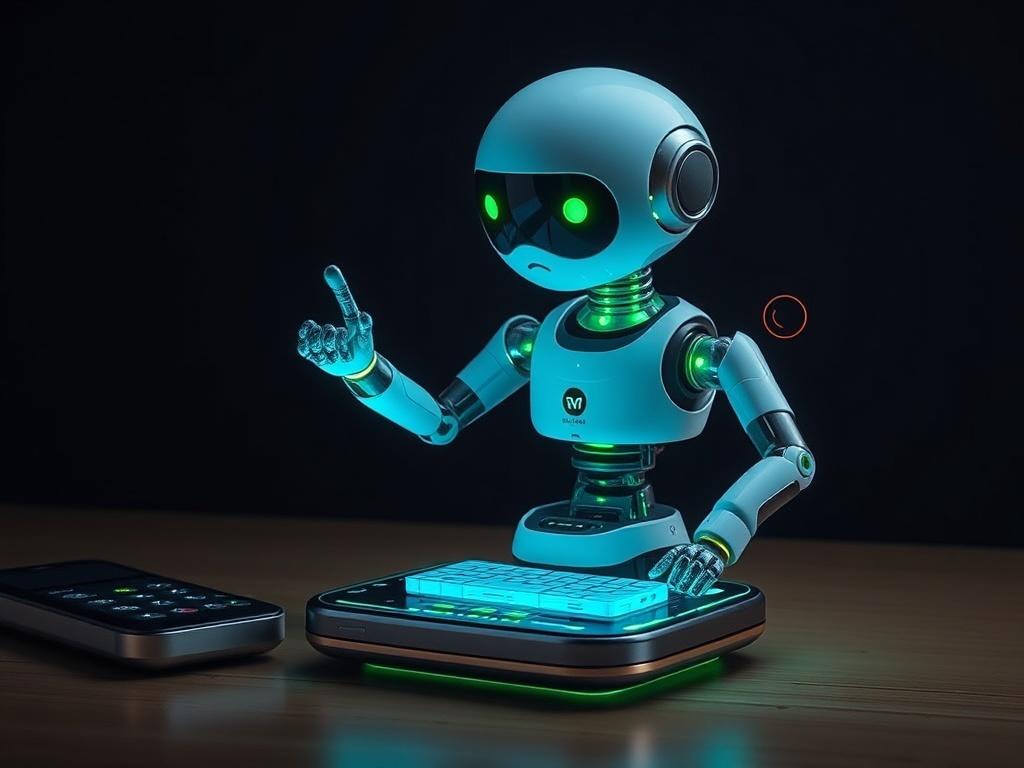
Artificial intelligence gadgets in 2025 are poised to significantly reshape our daily technology interactions and enhance the smart lifestyle many aspire to. By integrating AI deeply into everyday devices, these innovations offer a level of personalization and adaptability previously unimaginable. Instead of passively following preset commands, AI-powered gadgets learn from our habits, preferences, and routines, evolving to meet our unique needs effortlessly. This dynamic nature enables users to experience technology that truly complements their lifestyle rather than complicates it.
The impact extends beyond individual convenience; these AI devices will foster a more connected and intelligent environment both at home and work. For example, smart home hubs endowed with emotional intelligence can react to the subtle cues of household members, adjusting lighting, temperature, or sounds to create an ambiance that supports wellbeing and productivity. This seamless interaction among devices, powered by AI and Internet of Things (IoT) technologies, transforms living and working spaces into responsive ecosystems that adapt in real time to human needs.
Moreover, the shift toward AI-enhanced gadgets marks a new era of efficiency. Routine tasks, from scheduling to meal preparation and health monitoring, are increasingly automated, freeing valuable time for creativity, relaxation, and meaningful human connection. By reducing the cognitive load and streamlining daily workflows, AI innovations empower users to focus on what truly matters, leading to improved quality of life and greater satisfaction with technology use.
Smart Home AI Hubs with Emotional Intelligence
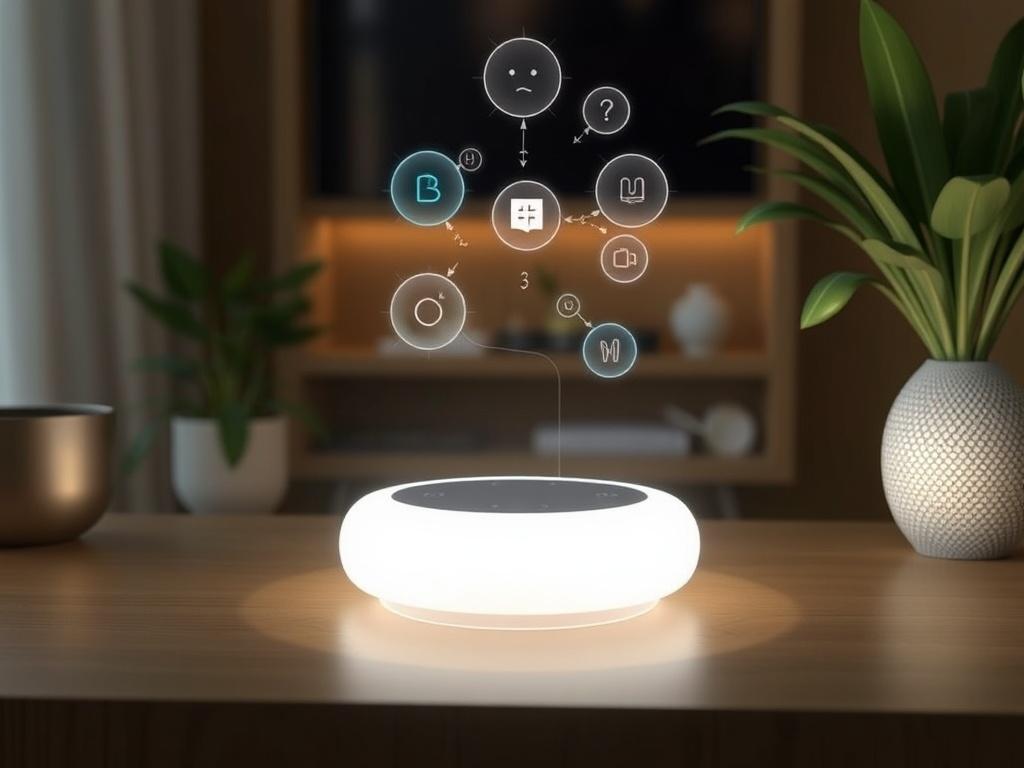
As AI technology advances, smart home hubs are evolving beyond simple voice-activated assistants to systems with genuine emotional intelligence. These next-generation hubs can analyze vocal tones, facial expressions, and even biometric data to gauge the mood and stress levels of household members. By interpreting these subtle emotional cues, the AI can proactively adjust the home environment—such as dimming lights, playing calming music, or regulating temperature—to help promote relaxation and well-being.
Integration with other connected devices amplifies the impact of these emotionally aware hubs. For instance, if the system detects elevated stress in one family member through voice analysis, it can coordinate with smart speakers to suggest guided meditation sessions or with smart kitchen appliances to prepare a soothing herbal tea. This deeply personalized and responsive approach transforms the home into an empathetic space that supports mental and emotional health on a daily basis.
Such emotional intelligence within the smart home ecosystem also extends to safety and security. The AI can recognize signs of distress or unusual behavior patterns and alert family members or emergency services if necessary. By combining emotional insights with traditional smart home capabilities, these AI hubs create an environment that is not only convenient but also nurturing, setting a new standard for intelligent living spaces in 2025 and beyond.
How Emotional Recognition Enhances Home Environments
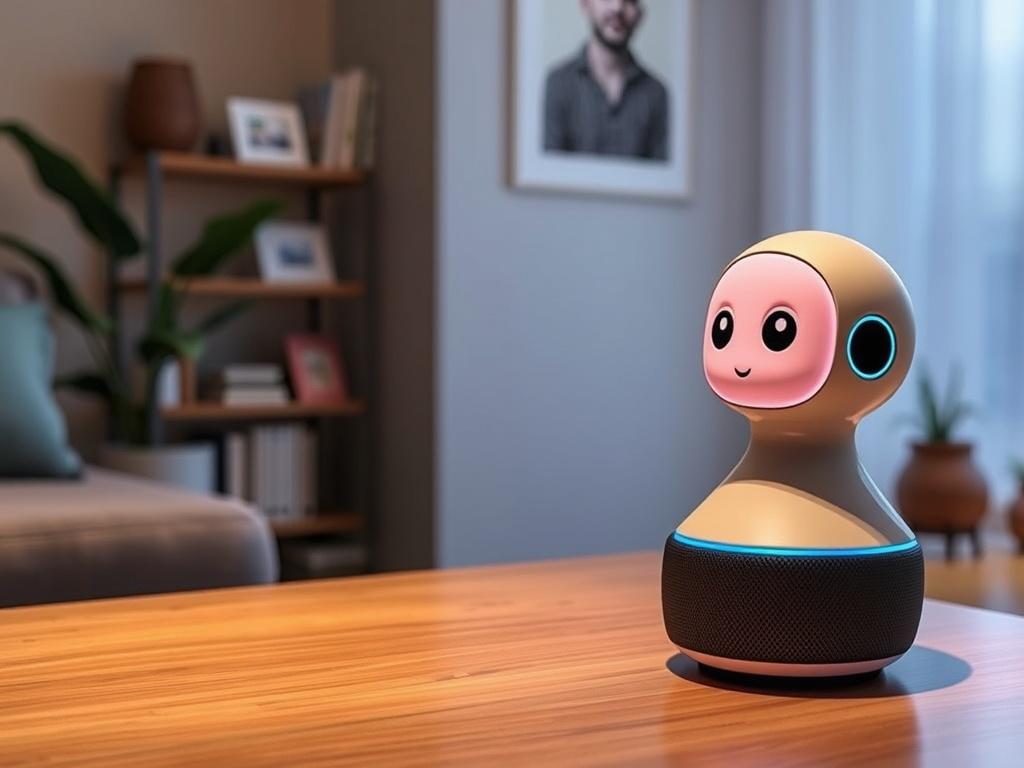
Emotional recognition technology embedded within smart home AI hubs represents a remarkable leap forward in creating living spaces that are truly responsive to human feelings. By analyzing subtle cues such as voice tone, facial expressions, and even physiological indicators, these systems can discern the emotional state of occupants with impressive accuracy. This capability enables the home to transition from a static environment into a dynamic, empathetic assistant that actively supports the well-being of its residents.
For example, when the AI detects signs of stress or anxiety through elevated vocal pitch or rapid speech, it can automatically adjust ambient settings to foster calmness. Dimming the lights to a softer hue, playing soothing music tailored to the individual’s preferences, or activating aromatherapy diffusers are just a few ways the hub can create a more comforting atmosphere. These real-time modifications help reduce tension and promote relaxation without the need for manual intervention.
Beyond mood enhancement, emotional recognition also provides a platform for preventive mental health care. If persistent signs of sadness or agitation are detected, the system can gently suggest mindfulness exercises, guided meditation sessions, or reminders to take breaks and hydrate. Moreover, integration with communication devices allows the hub to facilitate supportive interactions, such as connecting with trusted contacts or mental health professionals when necessary.
This heightened emotional awareness elevates smart homes from being merely convenient to becoming nurturing environments that improve quality of life. By understanding and responding to the nuanced emotional landscape of inhabitants, AI-powered hubs foster a harmonious living space that adapts intuitively, making everyday experiences more pleasant and emotionally balanced.
Integration with Other Smart Devices for a Seamless Experience

One of the most transformative aspects of AI-powered smart home hubs is their ability to seamlessly integrate with an ever-expanding ecosystem of connected devices. This interoperability allows the hub to serve as a central command center that orchestrates a range of smart appliances, lighting, security systems, and entertainment gadgets to work in harmony. By leveraging AI’s capability to process data from multiple sources, these smart hubs can deliver a cohesive and intelligent user experience tailored to individual preferences and real-time needs.
For example, when the AI hub detects that you’ve arrived home after a long day, it can communicate with smart lighting to adjust brightness to your favorite evening setting, signal the smart thermostat to create a comfortable temperature, and cue your preferred music playlist on connected speakers. This level of device-to-device communication eliminates the need for manual adjustments and fragmented control apps, creating a smoother, more intuitive environment. Integration also extends to security—cameras, door sensors, and motion detectors can collaborate with the AI to identify unusual activity, send alerts, and even initiate automated responses like locking doors or turning on lights to deter intruders.
Moreover, by connecting health-related wearables and wellness devices to the smart hub, the AI gains the ability to fine-tune the home atmosphere based on biometric feedback, such as heart rate or stress levels. This holistic view enables truly personalized recommendations and real-time adjustments that promote comfort and well-being. As AI and IoT technologies continue to evolve, the level of integration will deepen, fostering increasingly intelligent environments where every connected device contributes to a seamless, enriching user experience.
AI-Powered Health Monitors and Wearables
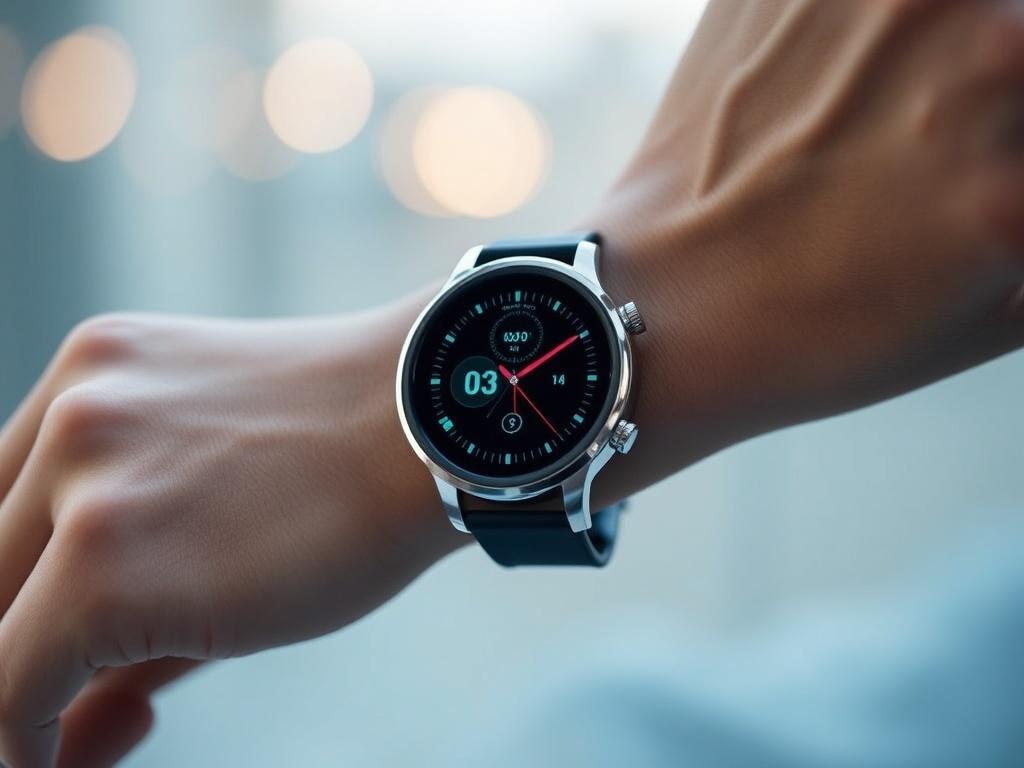
AI-powered health monitors and wearables are rapidly reshaping how we track and manage our health in 2025. These devices go beyond traditional fitness trackers by utilizing advanced artificial intelligence algorithms to continuously analyze vital signs such as heart rate, blood oxygen levels, and sleep quality. This enables early detection of potential health issues before symptoms become apparent, empowering users to take proactive steps in maintaining their well-being.
In addition to real-time monitoring, these wearables personalize fitness and wellness plans by learning from individual behaviors, preferences, and medical history. They can recommend customized exercise routines, nutritional advice, and stress management techniques that adapt dynamically based on the user’s condition and lifestyle. This level of personalization fosters better adherence and more effective health outcomes.
Collaboration between AI health gadgets and healthcare providers is another significant advancement. By securely sharing critical data with doctors and specialists, these devices facilitate timely intervention when irregularities such as arrhythmias or early signs of chronic diseases like diabetes are detected. This integration not only improves diagnostic accuracy but also supports remote patient monitoring, reducing the need for frequent in-person visits.
Predictive Health Analytics and Personalized Fitness Plans

AI-powered health monitors and wearables in 2025 will transform personal healthcare by leveraging predictive analytics to anticipate potential medical issues before they manifest. These devices continuously collect and analyze vast amounts of biometric data—from heart rate variability and blood oxygen saturation to sleep patterns and movement metrics. By applying advanced machine learning models, the AI can recognize subtle trends and anomalies that may indicate early-stage conditions, such as arrhythmias, glucose irregularities, or respiratory concerns, enabling timely alerts and preventive measures.
Beyond merely tracking health metrics, these intelligent wearables craft highly personalized fitness and wellness plans tailored to each user’s specific needs and goals. The AI adapts in real time based on ongoing activity levels, recovery status, and even mood indicators, ensuring workout intensity and nutritional recommendations remain optimal and effective. Whether you’re training for a marathon or managing chronic conditions, these customized plans help maximize benefits while minimizing risks.
This level of personalization is further enhanced through integration with other health data sources, including genetic information and lifestyle inputs, creating a comprehensive health profile. The dynamic nature of AI means fitness regimens evolve with the user, responding intelligently to progress plateaus or emerging health signals. As a result, users not only achieve better outcomes but also gain deeper insights and motivation to maintain long-term wellness.
Collaboration with Healthcare Providers for Timely Care
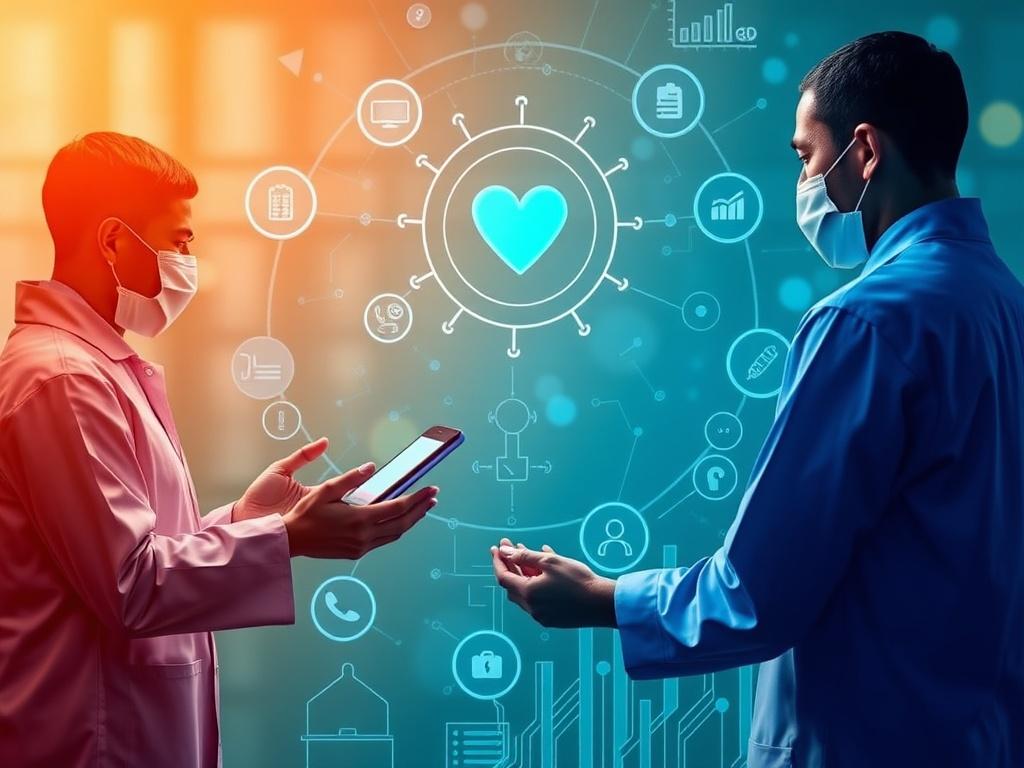
One of the most transformative aspects of AI-powered health monitors and wearables in 2025 is their ability to collaborate directly with healthcare providers, streamlining the path from data collection to actionable medical care. By securely transmitting real-time health metrics and predictive analytics to doctors and specialists, these devices enable timely interventions that can significantly improve patient outcomes. This connectivity not only facilitates early diagnosis of conditions like arrhythmias or diabetes but also supports ongoing remote monitoring, allowing clinicians to adjust treatments based on up-to-date information without requiring frequent office visits.
This continuous data sharing is made possible through advanced encryption and privacy protocols that ensure sensitive health information remains protected while enabling seamless communication between users and healthcare systems. Such integration helps bridge the gap between patients’ daily lives and clinical environments, creating a proactive healthcare model that emphasizes prevention rather than reaction. In cases where anomalies or warning signs are detected, the AI-run system can automatically alert both patients and their healthcare providers, prompting timely responses that might prevent more serious complications.
Moreover, the collaboration extends beyond emergency alerts to personalized health coaching and support. Healthcare professionals can review longitudinal data collected over weeks or months, gaining comprehensive insights into a patient’s lifestyle, medication adherence, and recovery processes. This rich dataset empowers more informed decision-making and tailored care plans, improving treatment efficacy. As AI health gadgets continue evolving, this partnership between technology and human expertise will play a pivotal role in redefining how we manage health, transitioning from episodic care to continuous, connected wellness.
AI-Driven Cooking Appliances Revolutionizing Kitchens
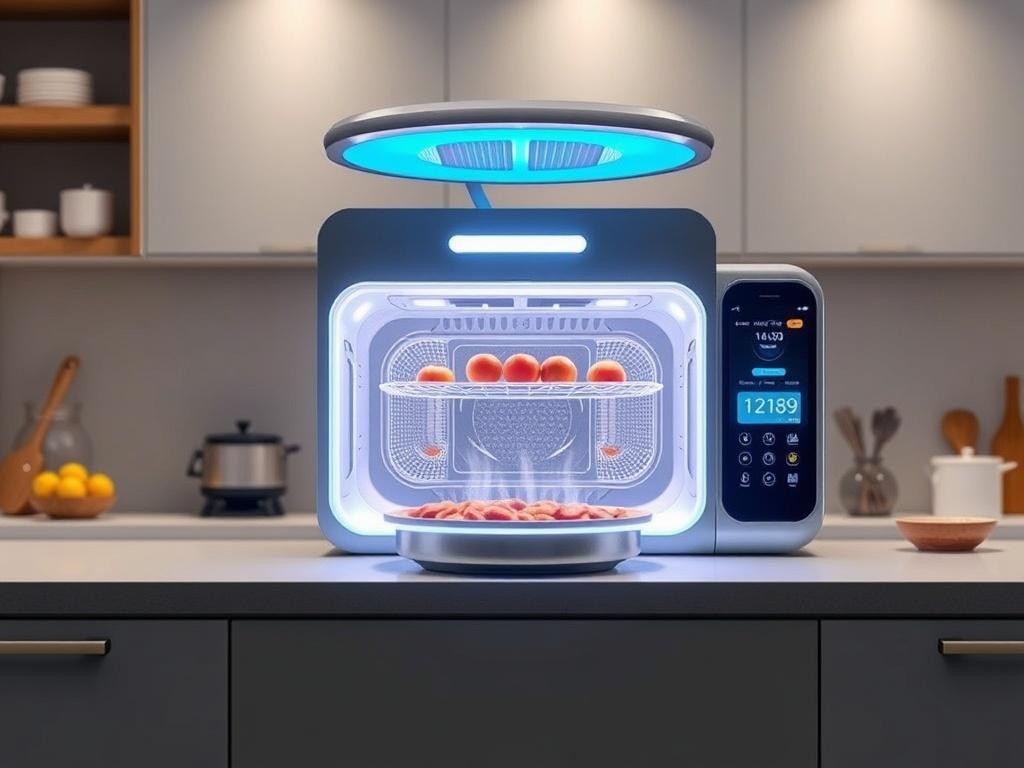
In 2025, AI-driven cooking appliances are set to transform kitchens into smart culinary studios where technology meets gastronomy. These appliances go beyond traditional timers and temperature controls by harnessing artificial intelligence to deliver personalized cooking experiences. By analyzing the ingredients you have on hand, dietary preferences, and nutritional goals, these smart devices suggest recipes tailored precisely to your tastes and health requirements. This dynamic guidance ensures every meal you prepare is not only delicious but also perfectly balanced and aligned with your lifestyle.
One of the standout features of AI-driven ovens, stovetops, and kitchen assistants is their ability to learn from your cooking habits over time. They adapt recipes on the fly, adjusting cooking times, temperatures, and even seasoning suggestions to deliver consistently excellent results. For novice cooks, this technology acts as a patient mentor, guiding them through each step with voice prompts or visual displays. Experienced chefs benefit by automating routine tasks and experimenting with new culinary ideas generated by the AI’s vast database of global cuisines.
These smart cooking appliances also integrate seamlessly with other AI gadgets in the home, such as smart refrigerators that monitor inventory and freshness, or AI hubs that manage meal planning and grocery orders. This interconnected ecosystem optimizes both the preparation and sourcing of ingredients, minimizing waste and ensuring that fresh ingredients are always available. As a result, meal preparation becomes more efficient, sustainable, and enjoyable, elevating everyday cooking into a creative and stress-free activity.
Adaptive Recipes and Nutritional Customization

AI-driven cooking appliances in 2025 bring unprecedented adaptability to the kitchen by tailoring recipes to individual nutritional needs and personal taste preferences. These intelligent devices analyze the ingredients available, dietary restrictions, and health goals to create optimized meal plans that satisfy both flavor and wellness requirements. Whether you are aiming to reduce sodium intake, increase protein consumption, or avoid allergens, the kitchen assistant adjusts recipe recommendations accordingly, ensuring every dish contributes positively to your overall nutrition.
Beyond basic substitutions, these appliances continuously learn from your cooking behavior and feedback to refine recipes over time. By monitoring factors such as preferred spice levels, cooking durations, and portion sizes, the AI customizes each step to match your unique style. This dynamic adjustment results in consistently perfect dishes that cater to your evolving palate, making cooking a personalized and enjoyable experience for everyone from novices to culinary enthusiasts.
Integration with smart refrigerators and pantry management systems further enhances this ecosystem by tracking ingredient freshness and suggesting recipes that minimize waste. This not only promotes sustainability but also helps streamline grocery shopping by prioritizing items needed for upcoming meals. As a result, the AI-powered kitchen becomes a smart, health-conscious, and efficient environment that supports mindful eating habits and culinary creativity simultaneously.
Enhancing Efficiency and Convenience in Meal Preparation

AI-driven cooking appliances are redefining the way we approach meal preparation by offering unparalleled efficiency and convenience in the kitchen. These smart devices automate many routine cooking processes, such as preheating, adjusting temperatures, and timing, freeing users from constant supervision and guesswork. By intelligently managing these elements, AI ovens and stovetops ensure meals are cooked evenly and to perfection, reducing the risk of overcooking or undercooking.
Integration with voice assistants and mobile apps allows users to control cooking appliances remotely, making multitasking throughout the day seamless. For example, you can start preheating your oven on your way home or receive notifications when your meal is ready, maximizing convenience and minimizing downtime. Additionally, these appliances provide step-by-step cooking guidance customized to your skill level, resulting in a more confident and enjoyable culinary experience regardless of expertise.
Beyond automation, AI smart kitchen gadgets learn users’ preferences and adapt recipes based on previous successes or adjustments. This personalized approach helps ensure that every dish matches individual tastes and dietary requirements, enhancing satisfaction while encouraging healthier eating habits. Over time, this continuous learning evolves the cooking process into a truly tailored experience that saves both time and effort without sacrificing flavor or nutrition.
Autonomous Delivery Drones and Robots in Everyday Life
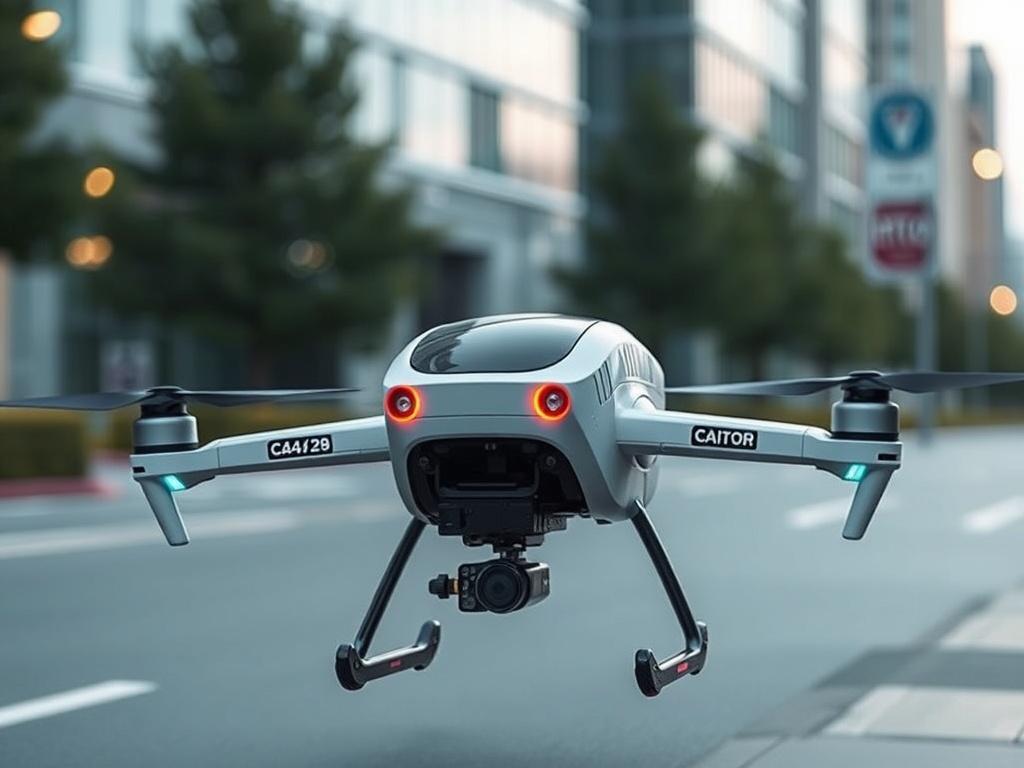
Autonomous delivery drones and robots are rapidly transitioning from futuristic concepts to practical solutions set to redefine everyday logistics in 2025. These AI-controlled devices offer a remarkable combination of speed, efficiency, and convenience, bringing groceries, packages, and restaurant meals directly to your doorstep without human intervention. Their ability to operate independently, navigate complex urban environments, and avoid obstacles makes them ideal for reducing delivery times and easing the strain on traditional transportation networks.
Advanced navigation systems powered by AI enable delivery drones and robots to map routes in real time, dynamically adjusting for traffic, weather conditions, and pedestrian activity. This ensures not only prompt deliveries but also safe operation within crowded or unpredictable spaces. Equipped with sensors such as LIDAR, cameras, and GPS, these autonomous vehicles maintain high situational awareness, enabling them to detect and respond to obstacles, road closures, or emergencies effectively. The continuous learning capabilities of their AI algorithms allow improvements in route efficiency and obstacle avoidance over time, making deliveries smoother and more reliable.
Beyond enhancing convenience, autonomous delivery solutions contribute positively to environmental sustainability. By optimizing delivery routes and employing electric-powered drones and robots, these systems reduce carbon emissions and traffic congestion associated with traditional delivery vehicles. This shift supports urban areas in meeting climate goals and improving air quality. Moreover, the reduced dependence on human drivers mitigates labor challenges in logistics and ensures a more consistent delivery service, especially during periods of high demand or workforce shortages.
Advanced Navigation and Obstacle Avoidance Technologies
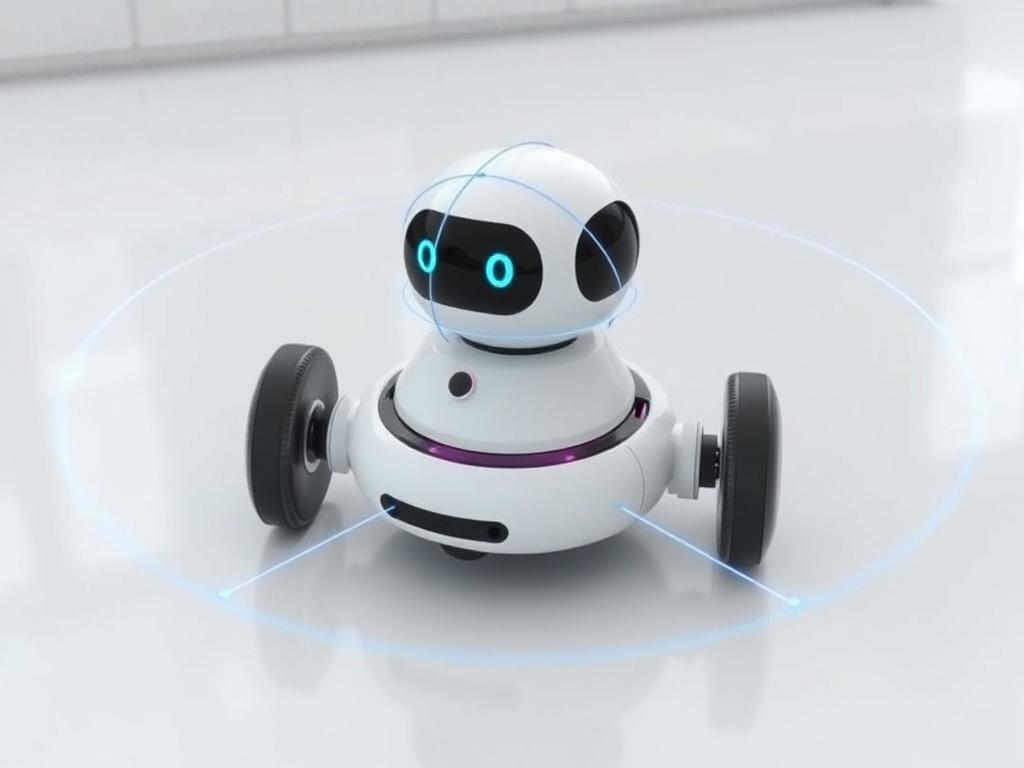
Autonomous delivery drones and robots rely heavily on advanced navigation and obstacle avoidance technologies to safely and efficiently operate in dynamic and often crowded environments. These AI-driven systems employ a combination of sensors, including LIDAR, radar, ultrasonic detectors, and cameras, to create accurate, real-time maps of their surroundings. This multisensory input allows the devices to detect obstacles such as pedestrians, vehicles, trees, and unexpected hazards while plotting optimal delivery routes.
Artificial intelligence algorithms process the sensor data continuously, enabling autonomous vehicles to make split-second decisions when navigating around objects or rerouting in response to changes in the environment. Machine learning enhances these capabilities by allowing the systems to adapt and improve their navigation efficiency over time, learning from past deliveries and obstacle encounters. As a result, delivery drones and robots can operate reliably in a wide range of conditions, including urban settings with heavy foot traffic and complex infrastructure.
Furthermore, these technologies ensure compliance with safety regulations by maintaining safe distances from obstacles and people while prioritizing secure and precise package delivery. The integration of GPS and global mapping data assists in route planning and geofencing, preventing drones and robots from entering restricted or hazardous zones. Together, robust navigation and obstacle avoidance systems are pivotal in transforming autonomous delivery into a practical, scalable service that promises greater convenience while minimizing risks to the public and the environment.
Environmental Benefits of AI-Powered Delivery Systems
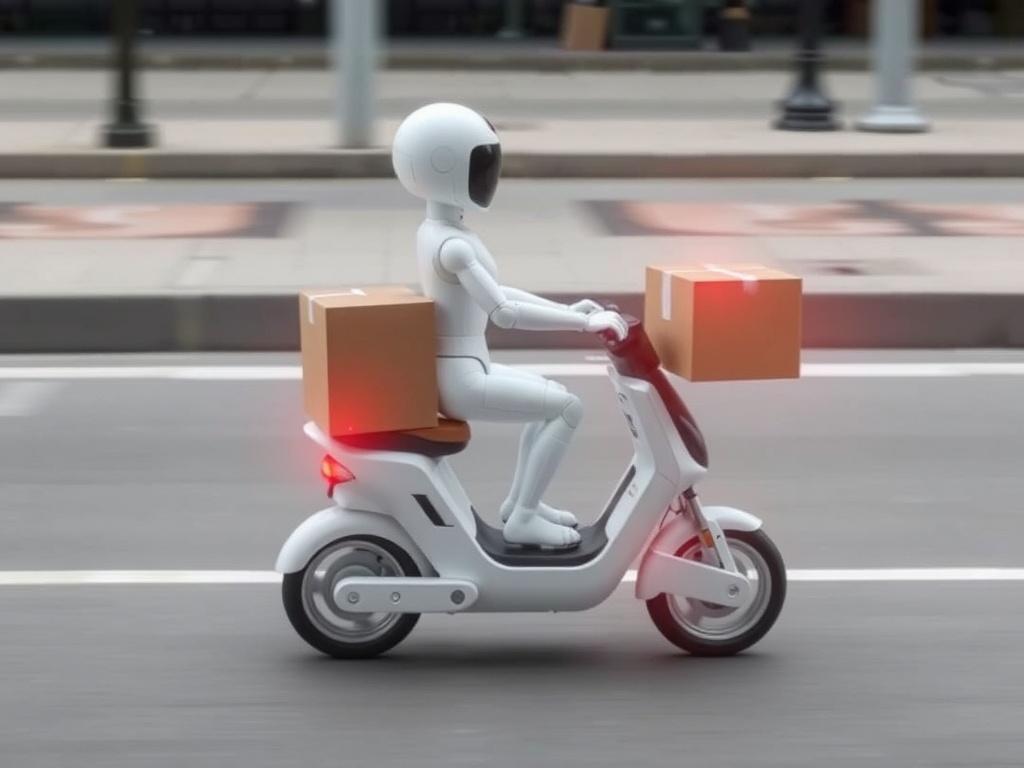
AI-powered delivery systems, such as autonomous drones and robots, are pioneering a more sustainable approach to urban logistics by significantly reducing the environmental impact typically associated with traditional delivery methods. By optimizing routes through real-time data analysis and sophisticated machine learning algorithms, these systems minimize unnecessary mileage, thereby cutting down fuel consumption and greenhouse gas emissions. Electric propulsion, common among these autonomous vehicles, further contributes to lowering carbon footprints, offering a cleaner alternative to conventional combustion-engine delivery vehicles.
Moreover, the implementation of AI-enabled delivery solutions helps alleviate traffic congestion in densely populated areas, decreasing the overall air pollution caused by idling vehicles and stop-and-go traffic. This leads to improved air quality and reduced noise pollution, fostering healthier urban environments. The smaller size and precision navigation capabilities of delivery drones and robots mean they can operate efficiently in narrow or crowded spaces where larger vehicles would struggle, enabling more localized and frequent deliveries with less disruption.
Another notable environmental advantage is the reduction of package waste facilitated by AI’s predictive analytics. By accurately forecasting demand and optimizing delivery scheduling, these systems minimize the need for excess packaging and repeated delivery attempts, which typically contribute to waste and higher emissions. Integration with smart inventory and logistics platforms further streamlines supply chains, ensuring that goods are sourced, packed, and delivered more efficiently – a key factor in creating a circular economy focused on sustainability.
AI-Powered Language Translators Breaking Down Barriers
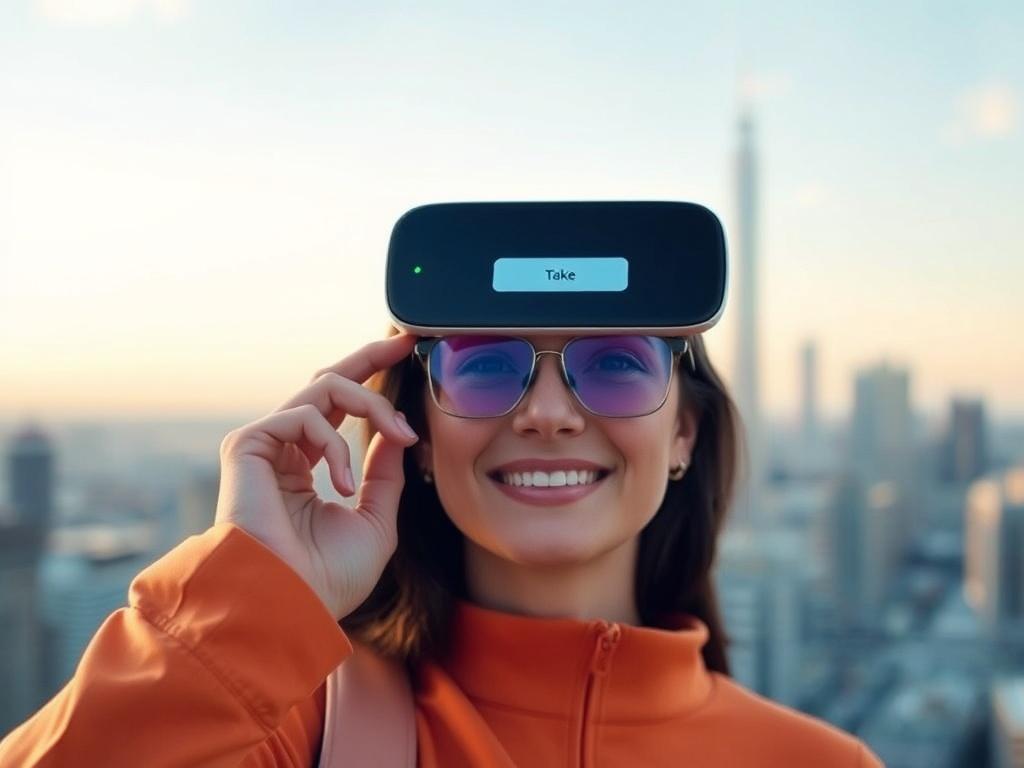
AI-powered language translators are becoming indispensable tools that bridge linguistic gaps in unprecedented ways, enabling seamless communication across cultures and countries. These devices, designed to be either pocket-sized or wearable, utilize advanced neural network algorithms and natural language processing to deliver near-perfect translation accuracy in real time. Whether you’re traveling abroad, engaging in international business, or simply connecting with friends from different backgrounds, these translators eliminate language barriers that once posed significant challenges.
What sets the latest AI translators apart is not only their accuracy but also their speed and convenience. With minimal latency, conversations flow more naturally, as speech-to-speech or text-to-text translation occurs almost instantly. Many of these gadgets also offer a multilingual interface supporting dozens of languages and dialects, further expanding their versatility and usefulness. Integration with earbuds or smart glasses adds hands-free operation, allowing users to understand and respond without awkward pauses or fumbling for devices.
In addition to real-time translation, AI language translators continuously learn and adapt to the user’s speech patterns, accents, and preferred vocabulary, enhancing the fluency and contextual relevance of translations over time. They also often feature offline modes powered by onboard AI, ensuring reliable communication even in areas with limited or no internet connectivity. The impact of these translators extends beyond convenience; they promote inclusivity and accessibility by making international interactions more meaningful and effective for millions worldwide.
AI-Enhanced Sleep Trackers for Optimal Rest
AI-enhanced sleep trackers in 2025 are redefining how we approach rest and recovery by providing deep insights into our sleep quality and patterns. Unlike traditional trackers that simply record basic metrics, these advanced devices employ artificial intelligence to analyze multiple factors such as sleep stages, heart rate variability, breathing patterns, and even environmental conditions like room temperature and noise levels. This comprehensive data collection allows the AI to identify subtle disruptions or irregularities that could affect overall sleep health.
Leveraging this rich information, AI sleep trackers offer personalized recommendations designed to optimize your nightly rest. Whether it suggests changes in bedtime routines, adjustments to room lighting, or modifications in mattress firmness through smart mattresses, the advice is tailored specifically to your unique sleep profile. Over time, the AI refines its guidance by learning from how your body responds, helping you achieve more restorative sleep and improved daytime alertness.
Integration with smart home devices plays a crucial role in creating the perfect sleep environment. For example, the sleep tracker can communicate with connected thermostats to maintain an ideal bedroom temperature or coordinate with smart lighting systems to simulate natural circadian rhythms by gradually dimming lights at night. Some systems even control white noise generators or air purifiers to minimize disturbances, all working in synergy to foster uninterrupted, high-quality sleep.
Analyzing Sleep Patterns and Environmental Factors
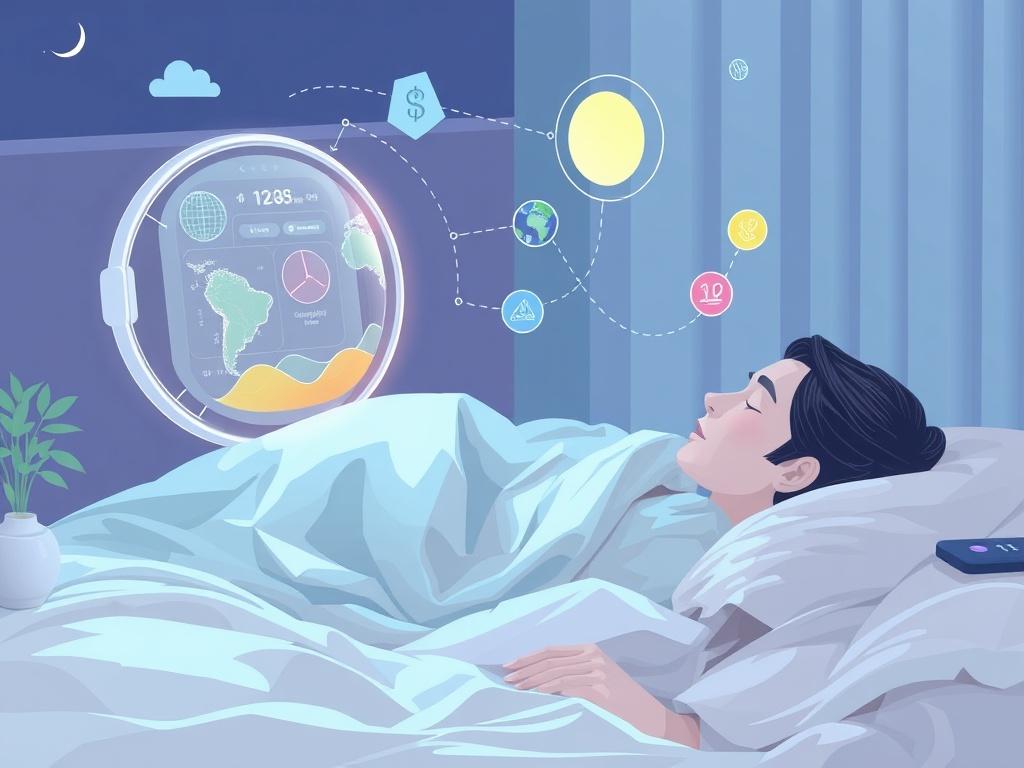
AI-enhanced sleep trackers in 2025 go far beyond simply recording the duration of your sleep. These devices utilize sophisticated sensors and artificial intelligence algorithms to analyze not only sleep stages—such as deep, light, and REM sleep—but also how external environmental factors influence your rest. By monitoring room temperature, humidity, ambient light, and noise levels, these trackers create a holistic picture of the conditions affecting your sleep quality night after night.
The AI processes this comprehensive data set to identify patterns and correlations that may not be obvious to the user. For instance, it can detect how even small temperature fluctuations or background noises disrupt your sleep cycles or reduce the duration of restorative REM sleep. By understanding these environmental impacts, the system can provide actionable insights, such as suggesting adjustments to your bedroom’s climate control or recommending noise-mitigating solutions like white noise machines or soundproof curtains.
Moreover, these AI systems adapt over time by learning from your individual responses to environmental changes, tailoring advice that fits your unique physiological profile. This continuous feedback loop ensures that the suggestions evolve as your habits and surroundings change. When integrated with other smart home devices, the tracker can automatically adjust lighting conditions or manage air quality, creating an optimized sleep environment without requiring manual input.
Smart Mattresses and Room Condition Adjusters
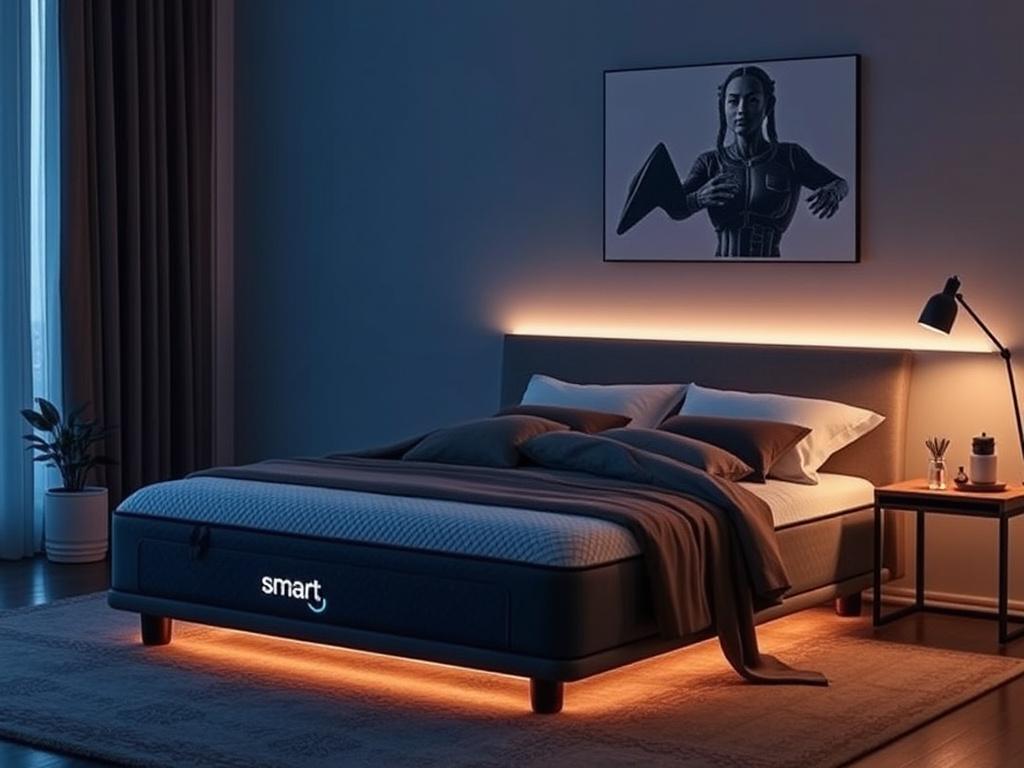
Smart mattresses and room condition adjusters represent a groundbreaking advancement in the quest for optimized sleep quality. These AI-powered systems work in tandem to monitor and modulate the sleep environment with precision, creating ideal conditions tailored specifically to each individual’s needs. By tracking parameters such as body movements, heart rate, and breathing patterns, smart mattresses provide real-time feedback that helps identify disruptions and phases of sleep. In response, connected room condition adjusters automatically regulate temperature, humidity, lighting, and even ambient noise to foster a more restful and uninterrupted night.
Beyond simple adjustments, the integrative approach of these devices harnesses artificial intelligence to learn sleep preferences over time, enabling the environment to adapt proactively. For example, if the system notices restlessness attributed to a room that’s too warm, it can gradually lower the temperature or engage cooling mechanisms designed to maintain comfort without causing wakefulness. Similarly, smart lighting can mimic natural circadian rhythms by dimming lights progressively as bedtime approaches or simulating dawn to signal waking naturally, supporting the body’s internal clock.
This personalized environmental control not only improves sleep duration but also enhances overall sleep quality by promoting deeper and more restorative stages, such as REM and slow-wave sleep. Importantly, such innovation reduces the need for users to manually tweak room conditions and sleep surfaces, which can disturb sleep. Instead, the AI system intelligently orchestrates multiple factors in harmony, resulting in an automated sanctuary focused on health and well-being.
AI-Powered Educational Toys: Personalized Learning for All Ages
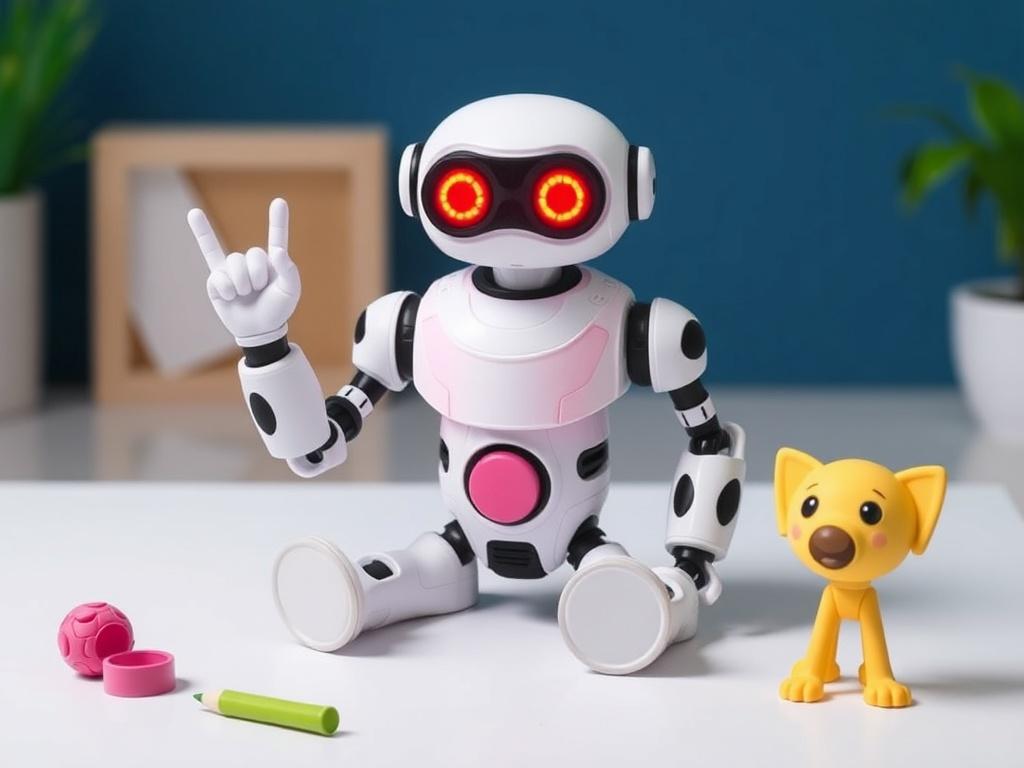
AI-powered educational toys are ushering in a new era of personalized and immersive learning experiences for both children and adults. These innovative gadgets harness artificial intelligence to adapt teaching techniques to the learner’s individual progress, ensuring that concepts are presented in a way that matches their unique cognitive abilities and learning pace. By tailoring content dynamically, AI educational toys help maintain engagement and motivation, making difficult subjects more approachable and enjoyable.
The interactive nature of these toys transforms passive learning into an active exploration. For language learners, for example, AI toys can simulate natural conversations, provide instant feedback on pronunciation, and introduce vocabulary in context, accelerating fluency development. Similarly, toys focused on coding or STEM subjects use gamified challenges that adjust in complexity based on the user’s skills, encouraging problem-solving and critical thinking in a fun, low-pressure environment.
One remarkable advantage of AI-enhanced educational toys is their ability to track and analyze learning patterns over time. This data enables the toy to identify areas where the learner may struggle and offer targeted practice or supplementary explanations. It also allows parents and educators to gain insights into the learner’s strengths and weaknesses, facilitating more informed guidance and support outside of playtime. As a result, these toys act as individualized tutors available anytime, blending education with play seamlessly.
Adaptive Teaching Techniques for an Immersive Experience
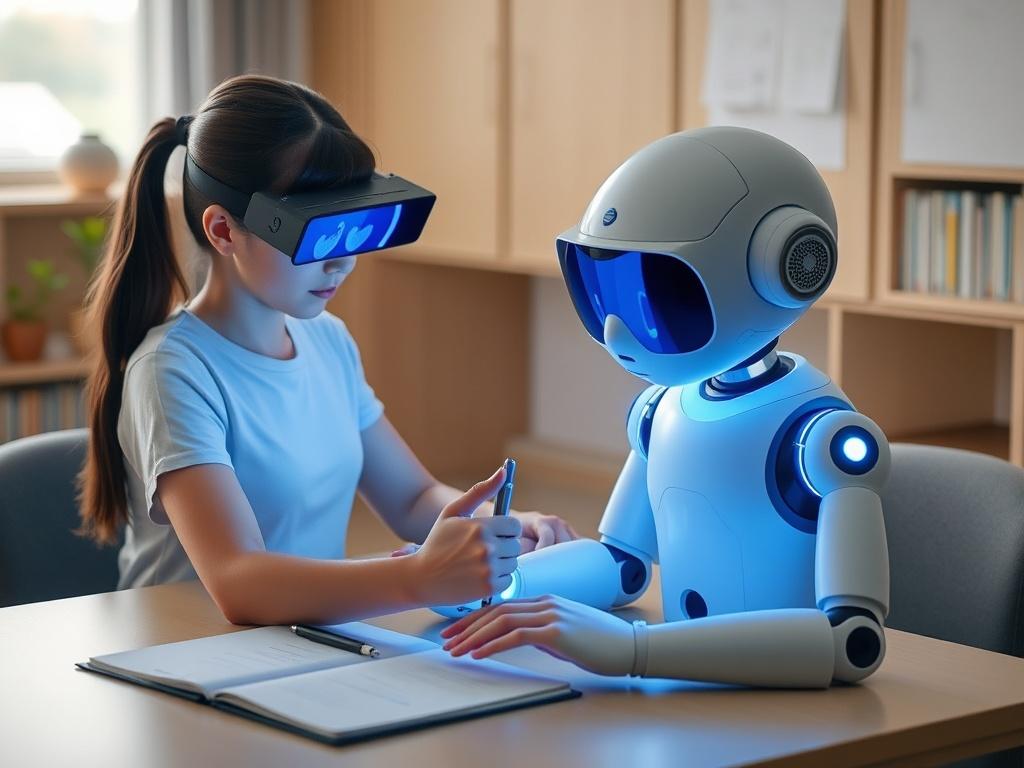
Educational technology is undergoing a remarkable transformation, thanks to the integration of AI-powered adaptive teaching techniques. These innovations enable learning devices and applications to tailor content delivery based on the learner’s individual progress, strengths, and areas for improvement. Instead of a one-size-fits-all approach, AI continuously assesses responses, engagement levels, and comprehension in real time, adjusting difficulty and pacing to optimize retention and motivation.
This immersive experience fosters deep engagement by presenting material through interactive simulations, quizzes, and personalized feedback loops. Learners are no longer passive recipients but active participants in their education, with AI guiding them through a path that suits their unique needs. Such customized learning environments allow for immediate corrections and reinforcements, preventing frustration and boredom that often arise from mismatch in instruction levels.
Moreover, adaptive teaching techniques powered by artificial intelligence can cater to diverse learning styles—whether visual, auditory, or kinesthetic—by dynamically shifting instructional methods. This flexibility extends to multilingual support and accessibility features, making learning experiences more inclusive. By harnessing AI in education, both children and adults gain the ability to pursue knowledge at their own pace in a manner that maximizes efficiency and enjoyment, ultimately leading to more meaningful skill acquisition and long-term mastery.
Encouraging Skill Development in Languages, Coding, and More
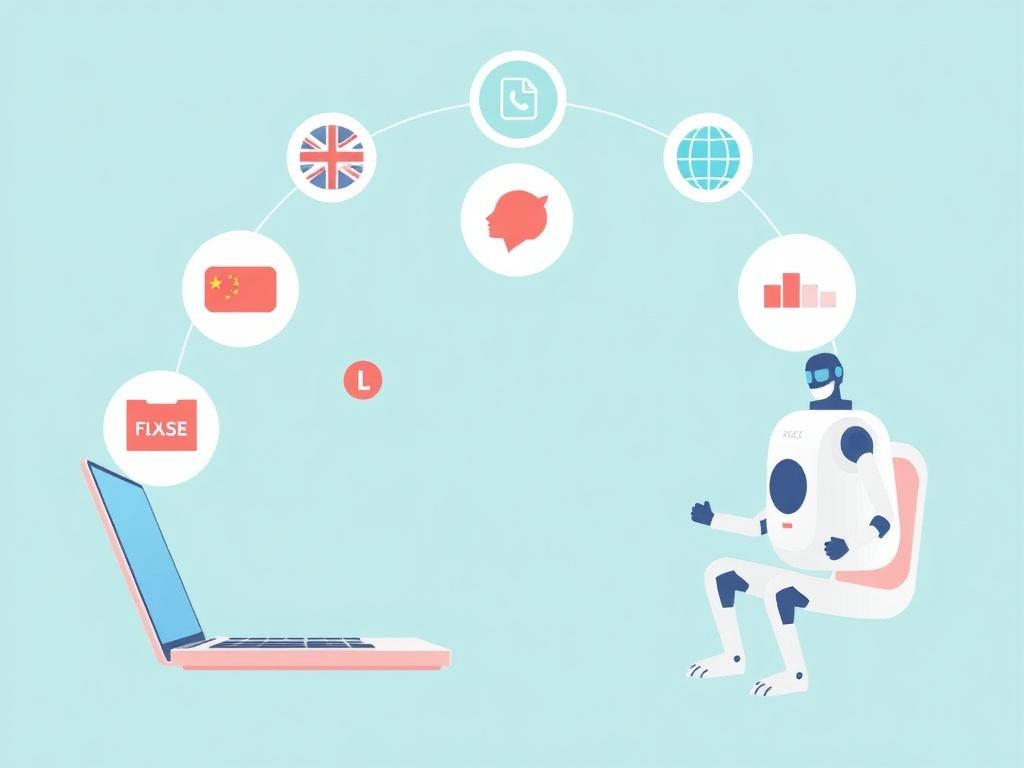
AI-powered educational toys are revolutionizing skill development by providing highly personalized and adaptive learning experiences across a spectrum of disciplines, including languages, coding, and other essential skills. These intelligent toys engage learners through interactive and gamified content that responds in real time to their progress, making education both effective and enjoyable. By continuously analyzing performance and adjusting challenges, AI-driven tools maintain a perfect balance between difficulty and achievement, fostering motivation and confidence.
When it comes to language acquisition, AI educational devices simulate immersive environments that encourage active speaking, listening, and comprehension. They offer instant feedback on pronunciation, grammar, and vocabulary use, helping learners overcome common hurdles with tailored practice exercises. Similarly, for coding and STEM-related skills, these toys present increasingly complex problem-solving tasks and projects that nurture computational thinking and creativity while promoting persistence and logical reasoning.
Another advantage of AI-driven skill development is the ability to cater to diverse learning paces and styles. Some learners may progress quickly through foundational concepts, while others benefit from additional repetition and varied instructional methods. AI educational toys recognize these differences and dynamically customize the curriculum, thus catering to both novices and more advanced students. This adaptability encourages continuous growth, ensuring learners remain challenged without becoming overwhelmed.
Why AI Gadgets in 2025 Will Make a Huge Impact on Future Electronics and Daily Tech
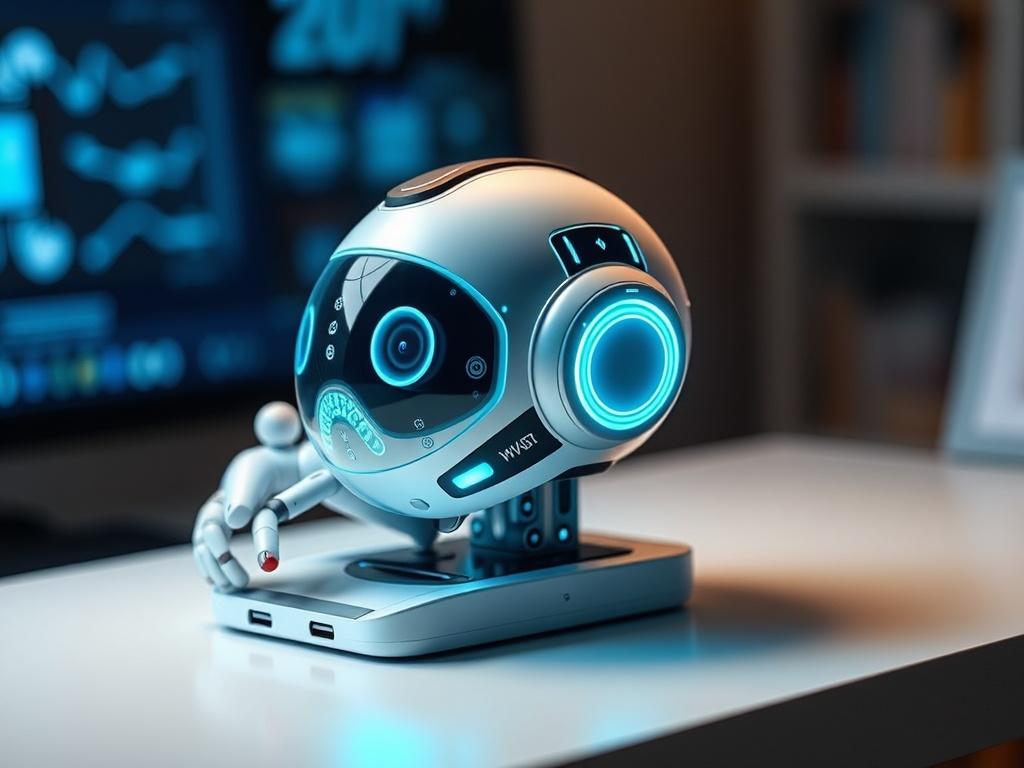
The integration of AI gadgets into our daily lives by 2025 will bring an unprecedented level of personalization, adapting continuously to users’ habits, preferences, and evolving needs. This increased personalization allows devices to proactively offer assistance, anticipate challenges, and streamline tasks, making technology feel less like a tool and more like an intuitive extension of ourselves. As AI systems learn and understand unique user behaviors, they will not only improve efficiency but also enhance the overall user experience by delivering tailored solutions that fit seamlessly into everyday routines.
Furthermore, the seamless integration of AI with the Internet of Things (IoT) is poised to create intelligent ecosystems within homes, workplaces, and public spaces. These ecosystems will enable diverse devices to communicate and coordinate autonomously, fostering environments that are responsive and adaptive in real time. For instance, a smart home might automatically adjust temperature, lighting, and security based on occupants’ mood and schedules, maximizing comfort and safety without any manual input. This deep interconnectivity offers a more harmonious and efficient interface between humans and technology, transforming static gadgets into collaborative partners.
Automation enabled by AI will dramatically enhance efficiency by relieving users from repetitive and mundane tasks. Whether it’s automating daily scheduling, optimizing energy consumption, or managing health and wellness routines, AI gadgets free up valuable time and mental energy, allowing people to focus on creativity, relationships, and personal growth. This shift not only increases productivity but also contributes to improved quality of life through reduced stress and a greater emphasis on meaningful activities.
Health and safety will see revolutionary advancements due to AI’s predictive and analytical capabilities.
Smart wearables and monitoring systems can detect early signs of illness or distress, enabling preemptive care and timely medical intervention. Emotional intelligence embedded in devices will also promote mental well-being by recognizing and responding to emotional states, fostering environments that support both physical and psychological health. Such proactive healthcare is poised to shift the paradigm from reactive treatment to continuous, personalized wellness management.
Finally, AI-driven accessibility tools will break down barriers that have long hindered communication and inclusion. Advanced language translators, augmented reality aides, and intelligent assistive devices will empower individuals with disabilities or language differences to engage more fully with the world around them. By enabling seamless interaction and understanding across diverse populations, AI gadgets in 2025 will expand opportunities for education, work, and social connection, making technology a powerful enabler of inclusivity.
Increased Personalization and Tailored Experiences
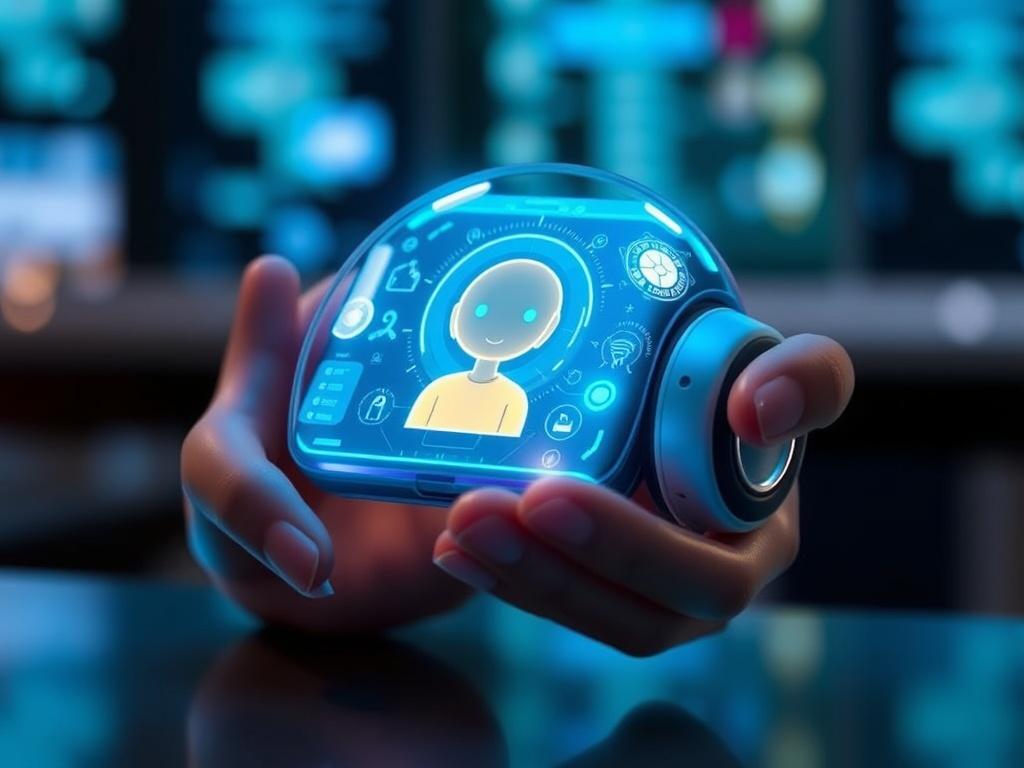
One of the most significant advancements AI gadgets will bring in 2025 is the ability to provide increased personalization and tailored experiences for users. These devices continuously learn from individual habits, preferences, and routines, allowing them to adapt their functionality dynamically. This means that instead of offering generic settings or responses, AI-powered gadgets will deliver customized interactions that align precisely with the user’s lifestyle, preferences, and even emotional states. This shift transforms technology from a one-size-fits-all tool into a truly intuitive companion.
Personalization in AI gadgets manifests in various ways—from adjusting ambient lighting and recommending content to suggesting health interventions based on real-time biometric data. For example, a smart home system might recognize your morning routine and automatically prepare your preferred coffee while playing your favorite news podcast. Similarly, health wearables fine-tune fitness plans by analyzing your performance trends and recovery patterns, ensuring that the advice is relevant and motivating. This contextual awareness reduces friction in everyday activities, creating smoother, more satisfying interactions with technology.
Moreover, these tailored experiences extend into emotional intelligence, where AI devices can recognize subtle cues like stress or fatigue and respond appropriately. Instead of simply following commands, devices anticipate needs and offer proactive assistance—whether that’s suggesting a calming playlist after detecting elevated heart rates or reminding you to hydrate during prolonged periods of activity. By catering to these nuanced aspects of daily life, AI gadgets foster a deeper connection with users, enhancing both comfort and well-being in ways traditional devices cannot match.
Seamless Integration of AI Gadgets and IoT Smart Devices
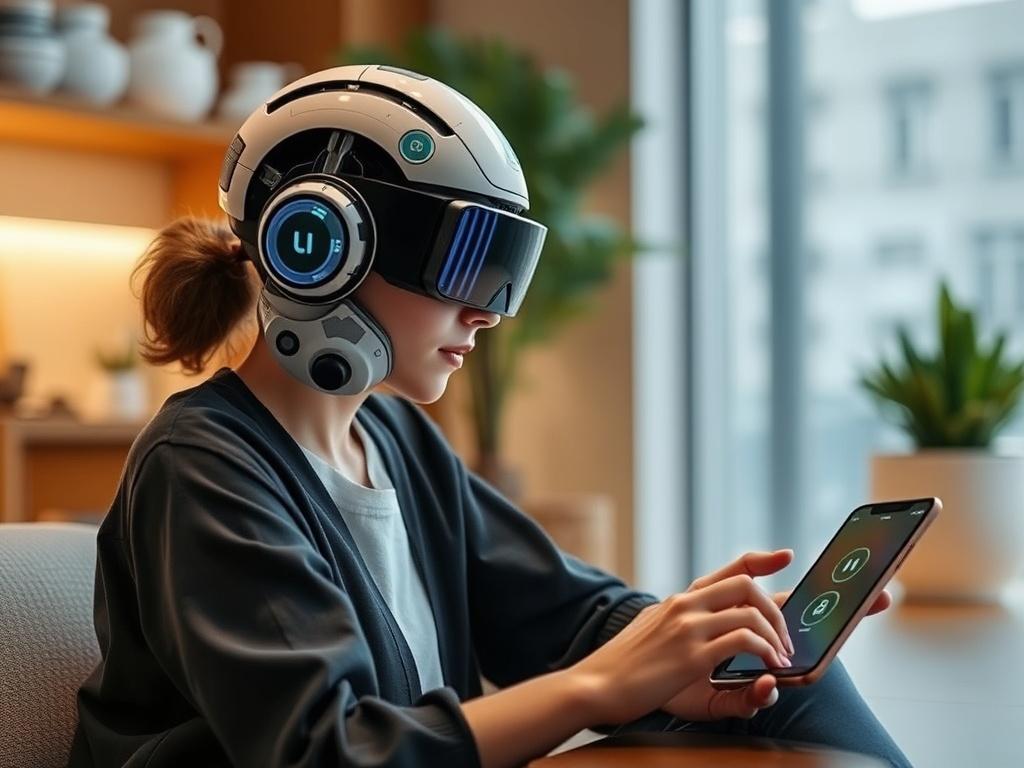
The seamless integration of AI gadgets with IoT smart devices is reshaping the way we interact with technology, creating interconnected environments that respond intelligently to our needs. By linking various devices—from smart thermostats and lighting systems to health monitors and kitchen appliances—AI acts as the central brain, orchestrating their communication and functionality to deliver a unified, adaptive experience. This interconnectedness allows for real-time data exchange, enabling devices to anticipate user preferences and automate complex sequences without manual input.
For example, a smart home system integrated with AI can adjust lighting and temperature settings upon detecting your arrival, while simultaneously preparing your favorite music playlist and brewing your morning coffee through connected kitchen gadgets. This level of coordination reduces friction in daily routines, making interaction with technology feel natural and intuitive. Moreover, integration extends beyond the home; workplaces, vehicles, and public spaces are increasingly incorporating networks of AI and IoT devices that collaborate to improve safety, comfort, and productivity.
Security and privacy remain critical considerations as these smart ecosystems grow. To ensure safe device interoperability, manufacturers employ sophisticated encryption and authentication protocols that prevent unauthorized access while maintaining seamless user experiences. Advances in edge computing further enhance integration by processing data locally on devices, reducing latency and reliance on cloud services. As AI and IoT technologies continue to evolve hand in hand, the promise of fully intelligent environments that adapt empathetically to human behavior becomes more attainable and practical for everyday life.
Enhanced Efficiency and Automation Benefits
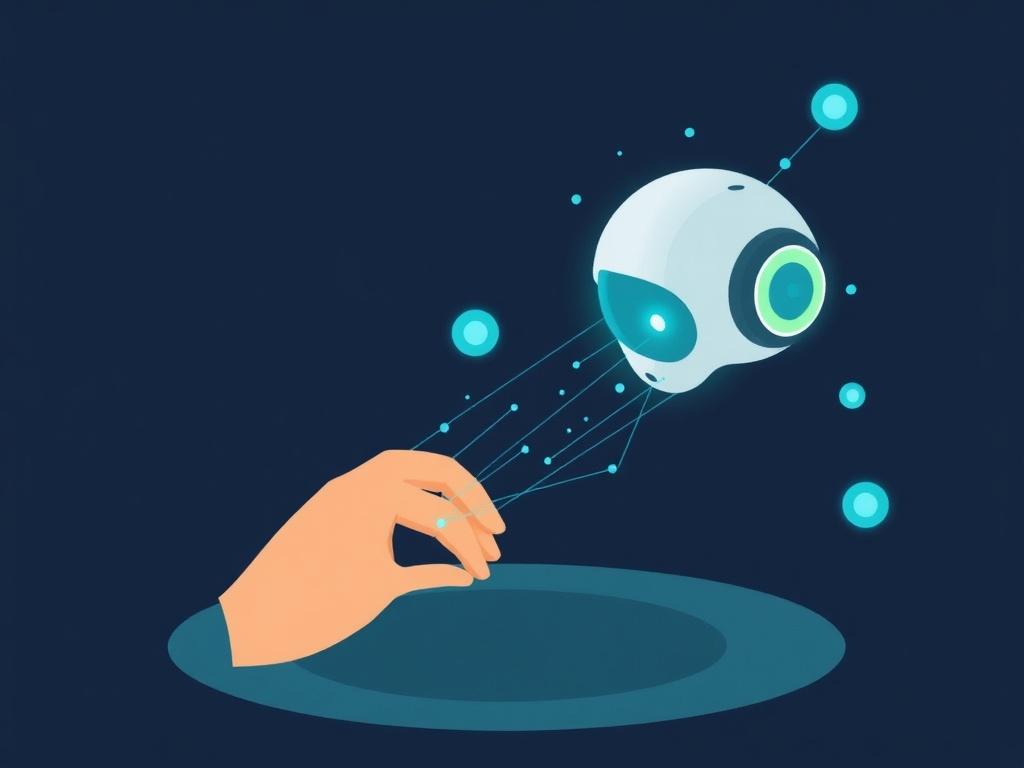
In 2025, AI gadgets will fundamentally enhance efficiency by automating a wide range of routine tasks that traditionally consume significant amounts of time and mental energy. Through intelligent algorithms capable of interpreting user habits and contextual data, these devices will anticipate needs and execute actions proactively, reducing the burden of manual management. By streamlining daily workflows across personal, home, and professional environments, AI-driven automation frees users to dedicate more attention to creative, strategic, and meaningful pursuits.
Automation powered by AI extends beyond simple task execution; it optimizes processes by continuously learning and adapting. For example, smart scheduling assistants will not only organize meetings based on availability but also factor in optimal productivity patterns, travel times, and individual preferences to suggest the best possible arrangements. Similarly, household devices such as cleaning robots, climate control systems, and energy management hubs will operate autonomously with precision optimizing resource usage and comfort simultaneously.
This increase in operational efficiency yields substantial benefits, including reduced stress from multitasking and improved consistency in task completion. AI’s ability to handle repetitive or complex sequences with minimal error enhances overall productivity and reduces the risk of oversight. Furthermore, the integration of automated notifications and reminders ensures important deadlines or maintenance chores are never missed, contributing to smoother management of personal and professional obligations.
Overall, AI-enhanced automation represents a pivotal shift, transforming technology from reactive tools into proactive collaborators that effectively manage diverse tasks. By delegating time-consuming responsibilities to intelligent devices, individuals gain greater control over their schedules and environment, ultimately enhancing quality of life and enabling a smarter balance between work and leisure.
Health and Safety Improvements through Predictive Technologies

Artificial intelligence is ushering in a new era of health and safety improvements by leveraging predictive technologies that can anticipate and mitigate potential risks before they escalate. These advanced systems collect and analyze vast amounts of data from wearable devices, environmental sensors, and electronic health records to identify subtle warning signs indicative of health deterioration or hazardous situations. By providing early alerts, AI-powered predictive tools enable individuals and healthcare providers to take proactive measures, ultimately reducing the incidence of severe medical events and accidents.
For instance, AI algorithms embedded in health monitors can detect irregular heart rhythms or fluctuations in blood sugar levels well in advance of symptomatic onset, prompting timely interventions that could prevent hospitalizations or chronic disease progression. Similarly, in occupational safety, predictive analytics analyze patterns of worker movements, fatigue, and environmental factors to forecast potential accidents and recommend adjustments in workflows or rest periods. This convergence of real-time monitoring and machine learning enhances overall wellbeing by focusing on prevention rather than reactive treatment.
The integration of predictive health and safety technologies also extends into public health management, where AI models forecast outbreaks and identify vulnerable populations by processing trends in symptom reporting, mobility data, and social determinants of health. This allows authorities to implement targeted interventions swiftly, reducing the impact of infectious diseases and improving resource allocation. The continuous feedback loop created by AI’s predictive insights enables iterative refinements in policies and personalized care plans, highlighting the transformative potential of these technologies across multiple dimensions of safety and health management.
Accessibility and Inclusion via Advanced AI Tools

Advanced AI tools are rapidly transforming accessibility and inclusion, making technology and everyday environments more welcoming and usable for people of all abilities. By leveraging machine learning, natural language processing, and computer vision, AI enhances assistive devices and services that enable individuals with sensory, cognitive, and physical impairments to communicate, navigate, and engage with the world more independently. These intelligent solutions go beyond basic accommodations, offering dynamic, real-time adaptations tailored to unique needs.
For example, AI-powered speech recognition and synthesis technologies enable voice-controlled operation for those who cannot use traditional input devices. Real-time captioning and sign language translation powered by AI help deaf or hard-of-hearing users participate actively in conversations, meetings, and entertainment. Computer vision algorithms embedded in smart glasses or mobile apps can describe surroundings, recognize faces, or read text aloud for visually impaired users, significantly enhancing spatial awareness and social interaction.
Furthermore, AI fosters greater inclusivity by breaking down language and communication barriers. Multilingual AI translators facilitate smooth exchanges among people who speak different languages and support users with limited literacy or cognitive challenges by simplifying complex language. Personalized AI learning aids adapt educational content and communication methods to accommodate various learning styles and abilities, empowering users to acquire new skills and knowledge at their own pace.
Collectively, these AI-driven accessibility innovations contribute to leveling the playing field, enabling fuller participation in social, educational, and professional settings. As developments continue, they hold the promise of a world where inclusivity is not just a goal but a built-in feature of technology, broadening opportunities and enriching lives for all.
Conclusion
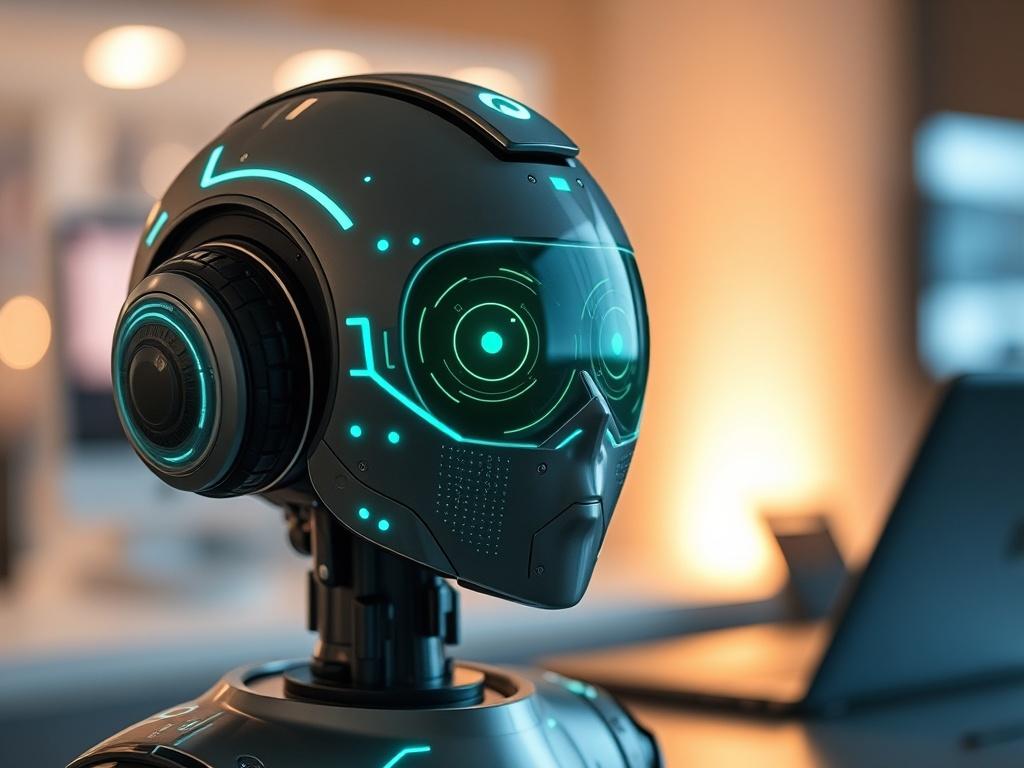
The advent of AI gadgets in 2025 marks a transformative milestone in the way we interact with technology and shape our daily experiences. By seamlessly integrating intelligent systems into wearable devices, home environments, healthcare tools, and educational platforms, these innovations extend human capabilities while simplifying complex tasks. The result is a future where technology serves as an intuitive partner, adapting continuously to individual needs and preferences to enhance convenience, well-being, and productivity.
This ongoing evolution fosters an ecosystem characterized by personalized, proactive assistance that anticipates our desires before we even articulate them. The interconnected nature of AI and IoT-enabled devices creates living and working spaces that respond dynamically, promoting healthier, safer, and more efficient lifestyles. With automation reducing the cognitive and physical burdens of routine activities, people are empowered to focus on creativity, personal growth, and meaningful social interactions.
Equally important is the role of AI in advancing inclusivity and accessibility, breaking down barriers related to language, physical abilities, and learning differences. As these technologies become more ubiquitous and refined, they offer expansive opportunities for education, communication, and participation across diverse populations. Embracing AI gadgets not only enhances individual quality of life but also lays the foundation for smarter, more connected communities, paving the way toward a future where technology amplifies human potential in extraordinary ways.
AI gadgets in 2025 are set to transform our daily tech routines and smart lifestyle by delivering unprecedented levels of personalization, efficiency, and connectivity. From futuristic wearable devices to intelligent home systems and educational tools, these future electronics will make everyday life smarter, healthier, and more enjoyable. Embracing these advancements will enable individuals and communities to thrive in an increasingly digital world.
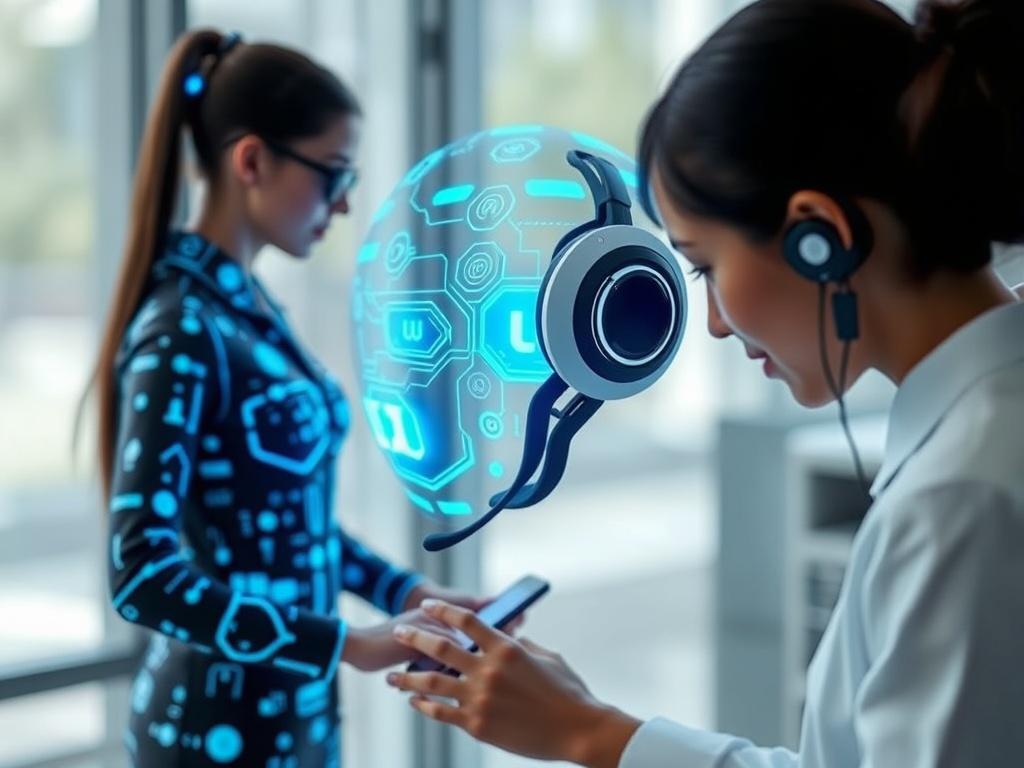
AI gadgets in 2025 are poised to revolutionize the way we interact with technology, blending seamlessly into our daily routines to offer highly personalized experiences. These devices will learn and adapt continuously, understanding individual preferences, habits, and even emotional states to provide support that feels intuitive and natural. By anticipating user needs, AI gadgets will reduce friction in daily tasks, making technology less of a distraction and more of a seamless extension of ourselves.
The rise of interconnected smart ecosystems will further enhance our lifestyles by promoting efficiency and connectivity. Intelligent home systems, wearable health monitors, and advanced educational tools will communicate with one another to provide a cohesive and responsive environment. This integration not only simplifies management of daily activities but also opens new possibilities for optimizing health, productivity, and learning through real-time data and automation.
Moreover, these next-generation electronics are designed to support healthier and more enjoyable living. Health monitors will enable proactive care by detecting early signs of illness, while AI-enhanced educational devices will tailor learning experiences to individual progress, fostering growth and skill development. As AI technology continues to evolve, embracing these smart devices will empower individuals and communities to thrive amidst the accelerating pace of digital transformation.